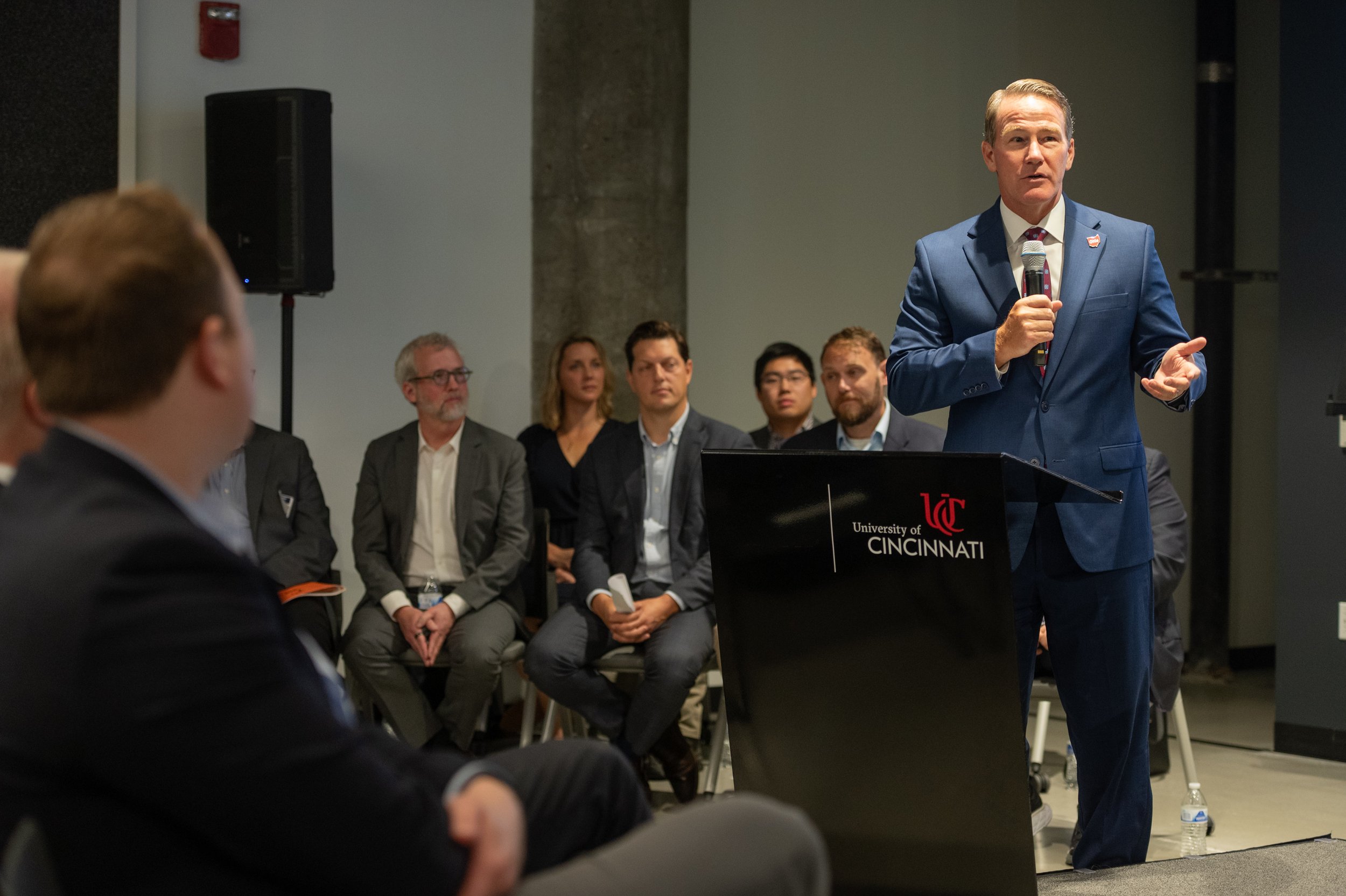Ohio’s AI Opportunity: A conversation with Ohio Lt. Governor Jon Husted

[caption id align="alignnone" width="4528"]

Lt. Governor Jon Husted speaks at the OH | AI Forum in Cincinnati. [/caption]
Artificial intelligence has the power and potential to transform economies and society. This summer, OhioX partnered with Lt. Governor Jon Husted and InnovateOhio to host two Forums, in Cleveland and Cincinnati, where leaders from education, industry, and government came together to discuss AI's impact on Ohio.
Following these two Forums, we spoke with Lt. Governor Husted to discuss Ohio's AI opportunity, how state government is using the technology, and the keys to positioning the Buckeye State as a leader in the Midwest.
—
Q: How do you view AI as a potential opportunity for Ohio?
AI is transforming logistics, analytics, and customer service by making them more efficient and user-friendly. Those are already areas of strength for Ohio.
The next step is collaboration with all the incredible resources that we have here, to continue building our state as the Midwest’s logistics and innovation hub. Recently, we led AI forums around the state, which included AI experts from Ohio companies and universities. AI in education will be an area we must capitalize on moving forward.
Q: What are some areas that the state has used AI to better serve residents and taxpayers?
AI has played a role in regulatory reform, helping to identify inefficiencies, and saving both time and resources.
An office I oversee, the Common Sense Initiative (CSI), is using AI to identify areas in Ohio’s Administrative Code where there is unnecessary or duplicative text. We use the tool to identify unnecessary mailing requirements and instances where Ohioans need to submit information to state agencies in person, instead of allowing for electronic communications.
CSI then works with state agencies to develop legislation, implementing these updates through the state budget process, saving the state almost $5 million annually as well as tens of thousands of state employee hours.
Previously, the Ohio Administrative Code contained over 17 million words. CSI used the AI tool to identify about 5 million that are unnecessary.
Q: What steps can our state take to promote the development and growth of AI-related industries and startups? How do we position Ohio as the AI leader in the Midwest?
We need great minds working together because those who collaborate best win. Ohio must attract more innovators and entrepreneurs, and once we have them, we need to keep that talent here.
Our innovation districts in Columbus, Cleveland and Cincinnati have been a great success and they are leveraging talent and research for job creation. We need to expand this to other parts of the state so that more Ohio communities can leverage their regional strengths, excel in the innovation economy, and create jobs and prosperity.
The new state budget includes a $125 million investment to fuel the creation of Innovation Hubs, which will improve the economic welfare of the nearby region by supporting local economic development activities. This will bring together leading-edge research facilities, academic institutions, and private corporations to spur new activity, generate new jobs, retain current talent, and support workforce training.
Q: How is the state planning to address the potential impact of AI on employment and the workforce? How can Ohio businesses re-skill and up-skill workers for an AI-driven economy?
AI will be rapidly integrated into our lives, and we must focus on how to use it for the greater good. AI can be a positive force in business, education, and workforce development. We need to prepare our leaders and our students for an AI-driven future, empowering them to thrive in an AI world.
We know AI will impact all industries, and that is one reason why we have the TechCred program, where Ohio employees can earn tech-focused skills for free. Ohio businesses can apply for up to $2,000 in reimbursement for each tech credential their employees earn, helping them upskill as technology changes the workplace. We also have the IMAP program that helps individuals earn tech-focused credentials for free through training providers selected through the program who offer the courses to earn these credentials.
Q: Education, especially K-12 education, will play a leading role in preparing Ohio's workforce for AI-related jobs. What are the keys to positioning Ohio as a leader in AI education and workforce development?
It’s important that educators collaborate with each other and figure out how to do this right, because when children leave school at the end of the day, AI will exist out in the world. When students graduate from school, they will be working with AI tools and programs, so we have to ensure that they have the necessary skills to utilize them. Employers will need to hire students who graduate with AI knowledge and skills.
Intel recently announced that it is funding the launch of Khanmigo’s AI tutor assistant, because these types of tech companies will need students to have AI capabilities when they enter the workforce.
Q: What is the state's long-term vision for AI and its impact on Ohio and society at large? How do you see AI shaping the future of our state's economy?
Many of those policy questions are still being sorted out. One thing is for sure, we want Ohio to be a leader.
Every new technology ushers in change, both good and bad. From the candle to the light bulb and the computer to the iPhone, our history is full of innovation. Societies, cultures, and nations either dominate or become submissive based on their adoption of these new technologies. Whether those were weapons, steel, medicine, machinery, energy – all of those things were used in history to advance a culture or society. That’s why it’s important for us as a nation, as a state, and as communities to be leaders with every new technology.





